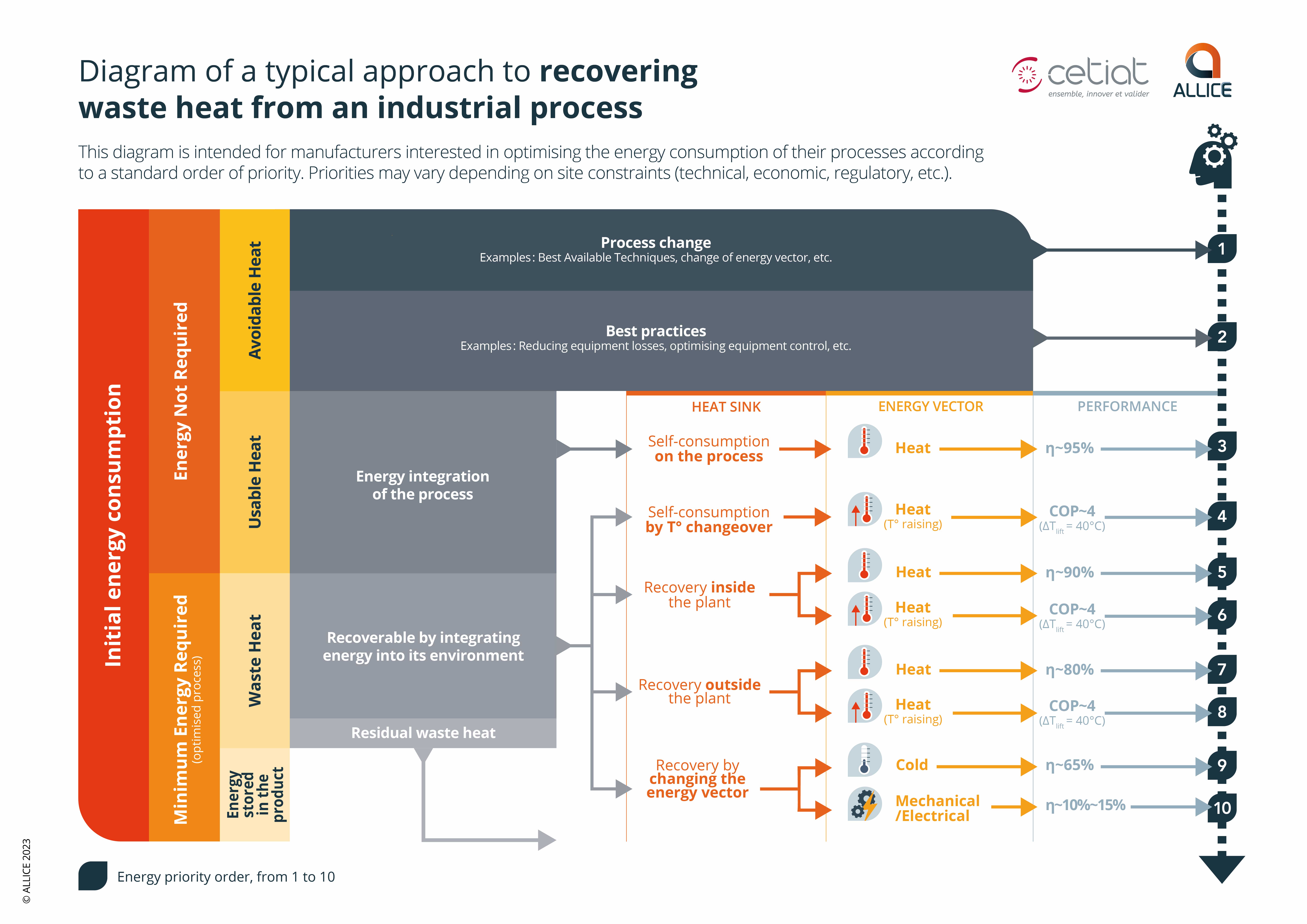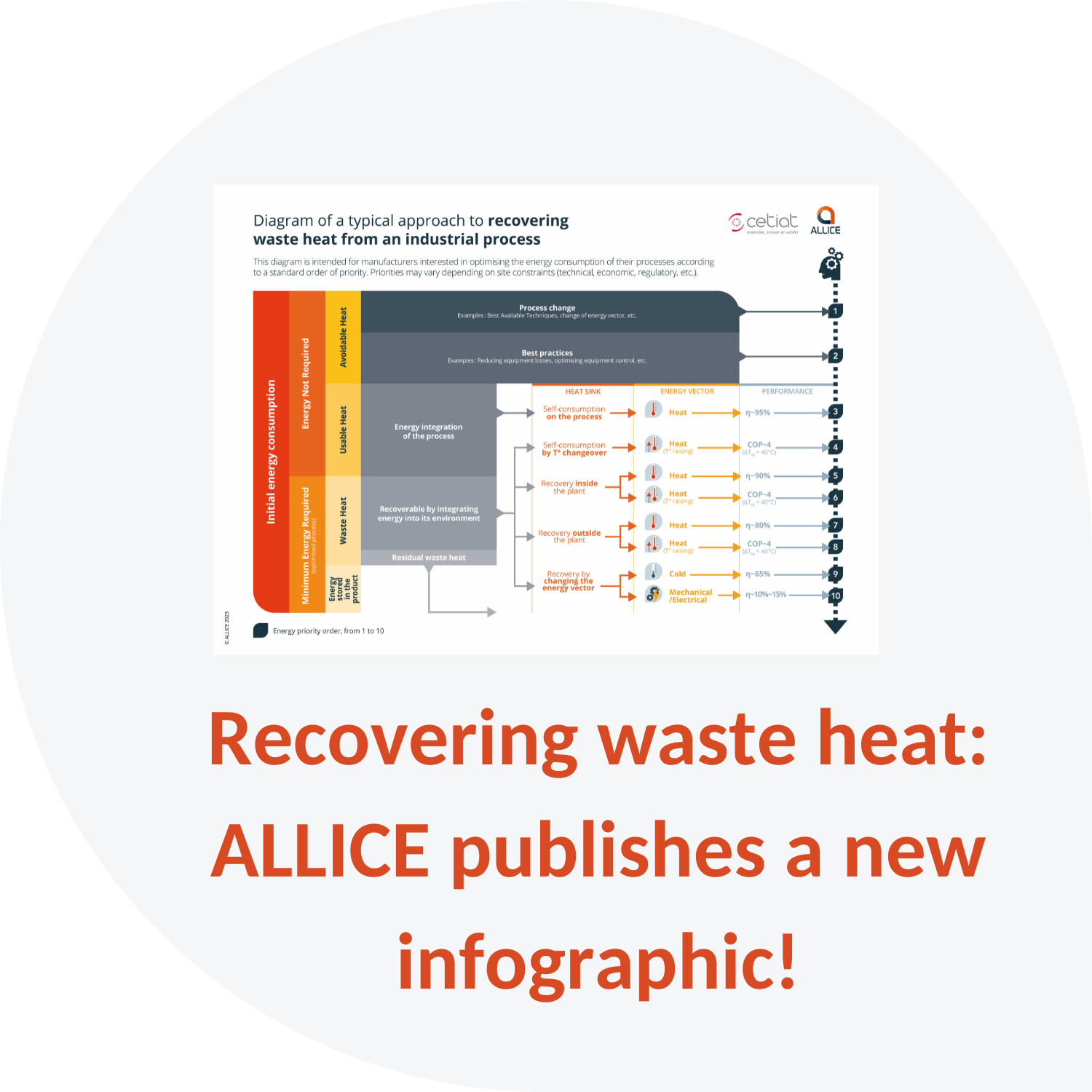
News
Recovering waste heat: ALLICE publishes a new explanatory infographic!
On 25|01|2024
Published on 25|01|2024
The industrial sector accounts for around 20% of French energy consumption. Most of this energy - 402 TWh according to INSEE in 2021 - is used or transformed into heat, with massive losses during its use. The issue of waste heat is therefore proving to be a real lever for industrial competitiveness, against a backdrop of rising energy prices. To help manufacturers think about and implement their actions, ALLICE has published an infographic to help them better understand how to optimise the energy consumption of their processes by recovering their waste heat.
The diagram proposes a standard order of priority (from 1 to 10), defined on the right of the diagram, and to be read from top to bottom. The classification of actions by theme can be read from left to right.
Examples of process changes: choice of Best Available Techniques (Best Reference), choice of the most appropriate energy vector.
Examples of best practices: reducing equipment losses ("thermal insulation"), optimising equipment controls, limiting temperature and pressure levels.
The heat can then be recovered through energy integration into the process via self-consumption [priorities 3 and 4].
Once the unrequired energy has been optimised, the minimum energy required remains. Some of this energy is stored in the product. The rest can be recovered by integrating energy into its environment (internally in the plant for other processes, externally to supply other sites that consume heat or by changing the energy vector) [priorities 5 to 10]. Residual waste heat that is not recovered and stored in the product is definitively lost.

A diagram to answer questions from manufacturers
How can waste heat be recovered from an industrial process? What type of recovery should be favoured? This ALLICE illustration seeks to answer these questions by proposing a typical order of priority for reducing and recovering heat from an industrial process. These priorities may differ depending on the constraints of the sites and industrial processes (technical, economic, regulatory, etc.).The diagram proposes a standard order of priority (from 1 to 10), defined on the right of the diagram, and to be read from top to bottom. The classification of actions by theme can be read from left to right.
How do you achieve the minimum energy requirements? Identify the right levels of priority
The first action is to avoid emitting unnecessary heat by changing the process [priority 1] or implementing best practices [priority 2].Examples of process changes: choice of Best Available Techniques (Best Reference), choice of the most appropriate energy vector.
Examples of best practices: reducing equipment losses ("thermal insulation"), optimising equipment controls, limiting temperature and pressure levels.
The heat can then be recovered through energy integration into the process via self-consumption [priorities 3 and 4].
Once the unrequired energy has been optimised, the minimum energy required remains. Some of this energy is stored in the product. The rest can be recovered by integrating energy into its environment (internally in the plant for other processes, externally to supply other sites that consume heat or by changing the energy vector) [priorities 5 to 10]. Residual waste heat that is not recovered and stored in the product is definitively lost.


